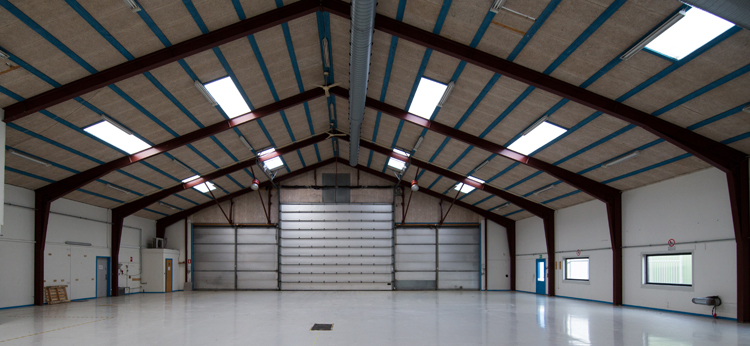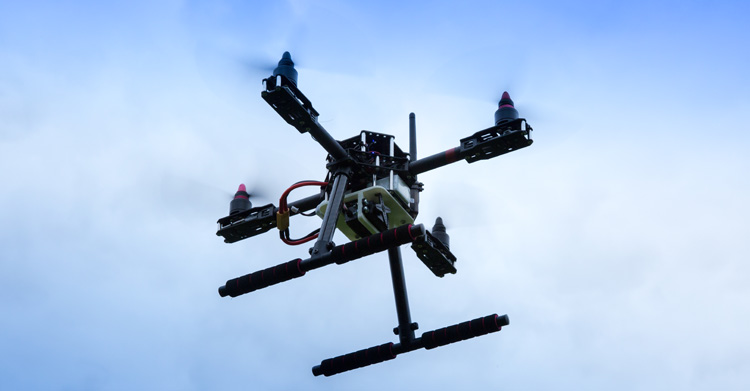
Drone Center moves into 2250 square metres hangar
A massive hangar in HCA Airport is to provide the framework for SDU's commitment to drones and make the airport a beacon for the development and testing of drones.
By Birgitte Dalgaard, bird@tek.sdu.dk, 09-12-2016
- For us drone researchers it's a dream come true. The hangar will be filled with the latest laboratory equipment: things like communication equipment and a 3D radar that can track the drones' movements from the ground, says Assistant Professor Kjeld Jensen from SDU Drone Center, whose research includes making drones independent of being controlled from the ground.
SDU Drone Center has purchased a hangar of 2250 square metres in HCA Airport. The hangar is large enough for drones to be able to fly indoors.
Consequently, researchers will have the best conditions for working on the development of new abilities for the flying robots.
- The large hangar will contain a composite workshop where we researchers can remodel and repair the drones and a system integration laboratory where we can test new control systems or communication tools for the drones, explains Assistant Professor Kjeld Jensen.

Unique opportunities for drone companies
With the purchase of the drone hangar, SDU is committing to making HCA Airport a unique location for the development, research and testing of drones; a Mecca for international drone companies because they can hire laboratories with the latest equipment and make adjustments to their drones after test-flying them at the airport.
- With the new drone strategy, Denmark’s Government demonstrates its ambition to make HCA Airport a national and international beacon for the development and operations of drones. We support this initiative, and when we integrate laboratory equipment and researchers at the airport we can offer companies unique opportunities, says the leader of SDU Drone Center, Brad Beach. He continues:
- Major international drone operators can land their aircraft at the airport and immediately start testing their drones. Afterwards, they can hire our laboratories so they can make adjustments to the drones after the test flights. This is unique.
Brad Beach points out that upgrading the equipment for drone research is made possible partly because in the Danish Drone Strategy, the Government has earmarked 30 million DKK for new national research infrastructure. A consortium of five Danish Universities added 34 million DKK in co-financing as part of the project.
SDU invests in drones
SDU has made a strategic decision to invest in drones. The university has done this after careful consideration of its own strengths as well as the growth potential for SDU and the surrounding community. The University hopes that by making the right strategic selection it can breathe new life into industrial development and growth, similar to that in the field of robots.
- To us, drones are flying robots, and we already have the nation's largest research capacity in the field of robots. Drones and drone technology is a new growth area with major industrial potential, just as it was with robots twenty years ago.
This is according to Kasper Hallenborg, who is Head of Department at the Maersk Mc-Kinney Moller Institute, to which robots and drones belong.
- That is why we see the development of and research into drones as an area where we as a university can be the driving force that generates innovation and new companies for the great benefit of the region, says Kasper Hallenborg.
